|
Rating: 4/5 Stars
Dive into the radiant world of California Golden by Melanie Benjamin, where the sun-soaked landscapes of 1960s Southern California set the stage for a mesmerizing exploration of family dynamics, desperation, and second chances. At the heart of the narrative is Carol Donnelly, a legendary female surfer challenging the norms of a male-dominated sport, and her daughters Mindy and Ginger. Fueled by their mother’s apparent indifference, these young sisters adopt Carol’s unwavering devotion to the ocean, normalizing PB&J sandwiches for dinner and skipping school to catch waves. While Mindy becomes a surfing sensation, basking in minor celebrity and winning competitions, Ginger finds herself entangled with the self-proclaimed ‘Surf God’ in a world of drug deals and beachside shack living. Drawing inspiration from a real-life mother-daughter surfing trio, Benjamin weaves a tale that, though fictional, swells with authenticity. The characters’ actions are often frustrating, but they undeniably contribute to the novel’s overall impact. Despite not always being likable, the characters come alive and shine the brightest when they’re hanging ten. What truly dazzles in this book is the key throughline: the generational echoes within a family when a woman is torn away from her true calling and thrust into a role she never desired. Through the compelling narratives of Mindy and Ginger, Benjamin explores how parental neglect leaves an indelible mark on a child’s beliefs and behaviors. Carol resists the conventional trappings of motherhood, often seeking solace by the seaside. In Carol’s absence, Mindy evolves into Ginger’s caretaker, fostering a fierce sense of self-preservation. Ginger, on the flip side, desperately seeks someone to look after her. These reverberations from their shared history resonate in their subsequent romantic relationships, adding layers of complexity to the emotional rollercoaster of the narrative.
0 Comments
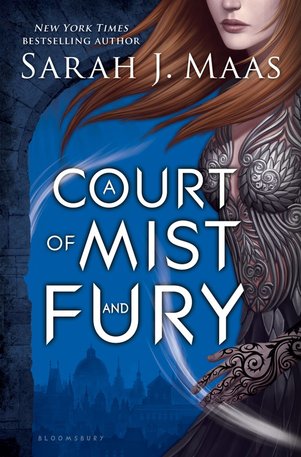 Written by Lauryn Smith As promised, I read “A Court of Mist and Fury” by Sarah J. Maas. You may remember my slightly scathing review of its predecessor, “A Court of Thorns and Roses.” Though I still have some qualms, the second in the “A Court of Thorns and Roses” series exceeded my expectations. The story picks up right where the first left off. In the aftermath of bad girl Amarantha’s demise, Feyre returns to life in the Spring Court with soon-to-be hubby Tamlin. But things are not all roses and daisies anymore. First of all, she has that tattoo linking her mind to Rhysand’s, as well as Rhysand’s pesky bargain regarding Feyre’s living arrangements, to worry about. Add to that Tamlin’s newly developed overprotective personality, and the fact that all in the Spring Court abide by his command to keep Feyre safe by restraining her to the grounds and limiting her access to information. Feyre used to feel thankful for Tamlin’s protection, but now she feels stifled, bored and unchallenged. She also cannot get over the guilt regarding the crimes she committed in order to save everyone from Amarantha’s wrath. In addition, the more she gleans about how the courts work, the more repelled by the system she becomes. Oh yeah, and she now has all the powers of a High Fae, powers that reflect those of each of the courts’ High Lords. On the day of Feyre and Tamlin’s wedding, Feyre falls apart. As he did multiple times in “A Court of Thorns and Roses,” Rhysand pops in and saves the day, whisking Feyre away to the dreaded Night Court. That is when everything changes and Feyre’s perspective shifts. Instead of willingly remaining a veiled treasure, Feyre gets her life back on track. She grows familiar with the people, places and politics of the Night Court, trains to control her potent powers and flirts mercilessly with Rhysand. All the while, a new and fiercer evil looms. And once more, Feyre is key in ending it. Maas again focuses on the good versus evil trope, this time on a dual level, both between the courts and an outside force as well as between individual courts. This is a classic and widely appealing theme, so no complaints there, granted the lack of emphasis on the plot leaves something to be desired. Also again, Maas attempts to make the story grab adult readers by including explicit sex scenes. Maas needs more than said sex scenes to make the novel appropriate for adults. Take them away, and this book is young adult through and through. I will contend, though, that the integration of action and romance is accomplished much better in “A Court of Mist and Fury” than in its predecessor. 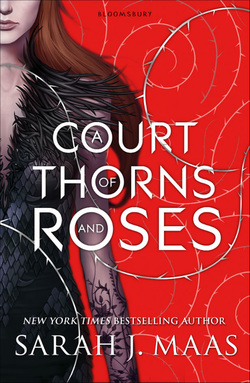 Written by Lauryn Smith I am not likely to win any friends with my review of “A Court of Thorns and Roses” by Sarah J. Maas. Recommended to me by another Reviewer, this book is a Young Adult fan favorite, but I question whether I can get on board. Before you ask, yes, I kept an open mind while dutifully reading through to the very last page (a necessity, since I swore to read its sequel, which I have been assured is much better than its predecessor). “A Court of Thorns and Roses” is the first in Maas’s A Court of Thorns and Roses series. An amalgamation of “Beauty and the Beast,” “Fifty Shades of Grey,” “Twilight,” a touch of “The Lion, the Witch and the Wardrobe” and a pinch of “The Hunger Games,” this book exemplifies fan fiction, and not entirely originally (more on this later). In it, a teenaged, wholly human diamond in the rough named Feyre kills a fearsome wolf in the woods and soon after is snatched from her derelict home by a handsome and fierce faerie, because, surprise, that wolf was actually a faerie, too. But her captor, Tamlin, is no ordinary faerie. He is a High Fae—a normal faerie but more striking, more magical and more powerful. Now a forced resident of Tamlin’s estate, Feyre learns that the kingdom’s residents are in turmoil and at risk of losing their powers, effects of a curse that was put on the land. Another effect? The faeries all have masquerade masks permanently stuck to their faces. Naturally, Feyre and Tamlin bond and fall in love, and Feyre’s sacrifice on Tamlin’s behalf restores peace to the land. 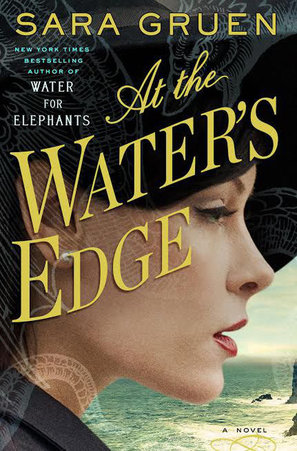 Written by Lauryn Smith Given that Sara Gruen authored “Water for Elephants” (one of my favorite books, in case you missed it!), there was no question that a review of her latest novel “At the Water’s Edge” would appear on BNR sooner or later. After a three-month hiatus, the time has come. Though not as addictive as “Water for Elephants,” “At the Water’s Edge” is a pleasant read. It is not much of a page-turner, and it includes a host of spoiled, rather dull characters, but overall, it is a smooth, interesting, well-written narrative with occasional complexity. Like some of Gruen’s previous novels, “At the Water’s Edge” is a period piece, this time set in the Scottish Highlands during the 1940s, right in the midst of World War II. The story follows the life of a rambunctious, privileged young Philadelphian woman named Madeline (Maddie) Hyde. After getting out of hand at one too many social gatherings, Maddie and her husband, Ellis, are financially cut off from Ellis’s family. Given their predicament, Maddie loyally accompanies her husband, along with their close friend Hank, on a trip to Scotland to complete a mission the men believe will ultimately restore the couple’s determinedly reckless lifestyle. 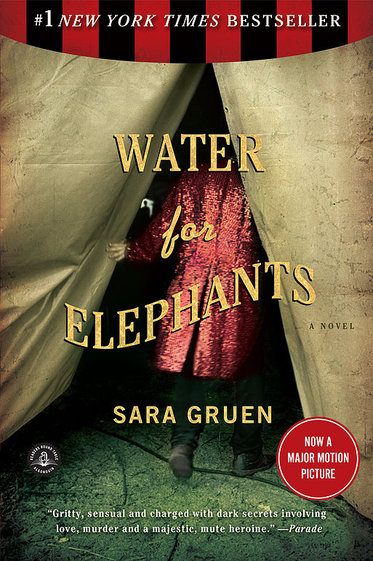 Written by Lauryn Smith Sara Gruen’s “Water for Elephants” is my favorite book. It is the best. The absolute best. The story’s plot is unusual, but, man, is it presented well. “Water for Elephants” is the fictional story of Jacob Jankowski, who in his twenties loses his parents in a car crash. Despondent and penniless, he walks out of his final veterinary school examination, and after hours of wandering, jumps a random freight train. It is what this train holds that changes his life. Gruen presents Jacob’s tale as if it were being told by his adult self, or rather his 90- (or 93-) year-old self. Widowed and alone in a nursing home, Jacob rejects the life he is now forced to live—mushy and flavorless food, tranquilizers, sponge baths, supervised trips to the bathroom. But one day, the circus sets up shop in the parking lot across the street, exciting all of the facility's residents, Jacob in particular. Why? Because that train he jumps as a young man belongs to the Benzini Brothers Most Spectacular Show on Earth—a traveling circus. As luck would have it, the Benzini show needs a veterinarian, giving Jacob enjoyable, albeit dirty, work. In this glamorous, lively retreat in a United States afflicted with prohibition and the Depression, Jacob finds love and passion—as well as wickedness. 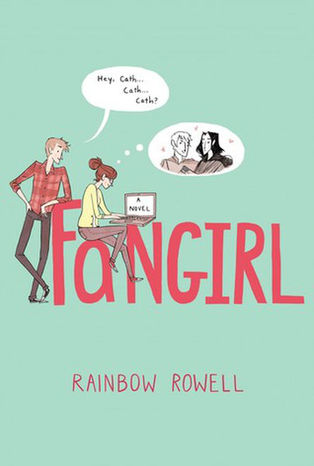 Written by Lauryn Smith and Beth Winters Harry Potter is to ‘90s kids everywhere what Simon Snow is to Cath and her peers in Rainbow Rowell’s novel “Fangirl.” Cath takes her fandom to the extreme. Simon Snow T-shirts. Simon Snow posters. Simon Snow busts. She even goes so far as to write Simon Snow fan fiction—and she is good at it. Cath’s fanaticism began as a child, when her mother left the family, leaving Cath and her twin sister behind. Now in college, Cath must deal with the trials and tribulations, both old and new, that compose her life. See our thoughts on Rowell’s novel below! Did you like “Fangirl”? Why or why not? LS “Fangirl” is definitely a quick read. Sometimes you need a story that does not require a lot of analyzing, and I like “Fangirl” for that reason. Rowell’s novel is void of any hugely remarkable facets. There are no twists, turns or “please tell me what happens next” moments, so it is does not really keep you at the edge of your seat. Rowell tells the story smoothly, and the book is interesting in terms of character development. That said, the story is lacking when it comes to substance. Cath’s college experience seems more like an idealized high school experience. For instance, the difficulties Cath experiences are exemplified lightly and given little acknowledgement. Do we really learn anything regarding how Cath felt when her mother left? Not really. We eventually learn how Cath perceives the situation in retrospect, yet we do not feel the consequences. How does that life-altering event relate to Cath’s love of Simon Snow? Such elaboration would have benefitted Rowell’s story. Maybe such gaps are intentionally left open because Rowell intends the story be geared toward twins or people who can relate to Cath’s apprehensive personality. Or, maybe they are left open to avoid complication, as the book's genre is YA fiction. 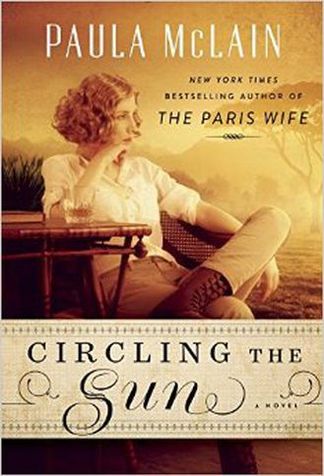 Written by Lauryn Smith Woman-behind-the-man books seem to be gaining popularity. Paula McLain is back with another, the historical fiction novel "Circling the Sun," in which she adheres to the story of Beryl Markham, a talented racehorse trainer and eventual record-setting aviator. A tale of courage, family, marriage, promiscuity and gossip, "Circling the Sun" is a well-written, intriguing tale of an impressive woman with a personality of questionable disposition. McLain opens the book with a depiction of a harrowing portion of Beryl’s historic 1936 solo flight—an ultimately successful east to west flight from England to North America across the Atlantic Ocean. She then leads into a prolonged reflection of Beryl's life before returning once more to the opening scene. Throughout the bulk of the book, McLain illustrates Beryl’s exploration of her life choices and core memories. Set in the 1920s in colonial Kenya, McLain exposes aspects of the protagonist’s youth that come to shape her character as an adult. Beryl is brought from England to a Kenyan farm as a child, is left by her mother (who after a short time in Kenya returns to England with Beryl’s younger brother), and is hence raised by her father and the local Kipsigis tribe. Members of this tribe call her Lakwet, a name that implies bravery and self-sufficiency, a name that implies a respect for and love of nature, a name that comes to act as the link between Beryl’s adult self and her younger one. 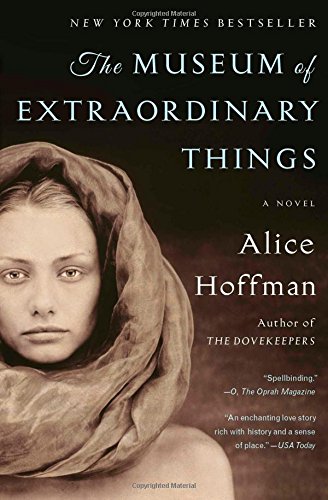 Written by Lauryn Smith In her historical fiction novel "The Museum of Extraordinary Things," Alice Hoffman invites readers to dive into dueling worlds, one mystical and breathtaking, the other dark and seedy. Set in 1911 New York, Hoffman illustrates the time by interweaving the stories of Coralie, a young woman who assists her father’s museum of “natural” wonders, and Eddie, a young man who struggles with his unfortunate past but finds solace in his work as a photographer and life in the Manhattan wilderness. Their paths cross when Eddie accepts a job reminiscent of those he used to accept from shady characters in his youth. This time the job is seeking the missing daughter of an acquaintance of his estranged father. In addition to providing readers a true page-turner of a book, Hoffman expertly introduces readers to actual historical events, in this case the Triangle Shirtwaist Factory fire in Greenwich Village and the fire at Coney Island’s amusement park, Dreamland. Hoffman, the author of more than 30 novels, seems to want to exemplify the psychological impacts of social and economic inequalities. Coralie feels trapped by the wishes of her father, who disallows her from showing her true self, going so far as to require her to glove her deformed hands, while simultaneously forcing her to train as a water-loving creature to be displayed at the museum. Eddie carries with him the watch of the young son of a wealthy factory owner, which he stole when he was a child working alongside his garment-worker father, a token that seems to represent his distaste with societal disparities. His unease is perpetuated by his craft, in which he uses his camera to capture both beautiful and sordid images. Likewise, Coralie learns that the museum of wonders that once seemed magical is actually a house of hidden horrors. How is it that the world can supply such extremes, and in such proximity? |

Enjoying my book reviews? If you’ve found them helpful or simply love diving into a good book, consider supporting my caffeine-fueled reading sessions! Your contribution helps keep the reviews coming and ensures I stay wide awake for those late-night reading marathons. Cheers to a shared love for literature! ☕️
Categories
All
|

